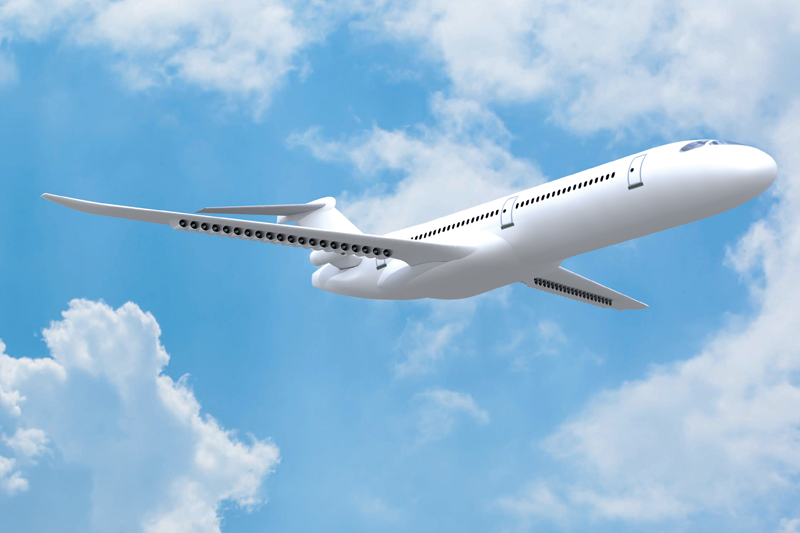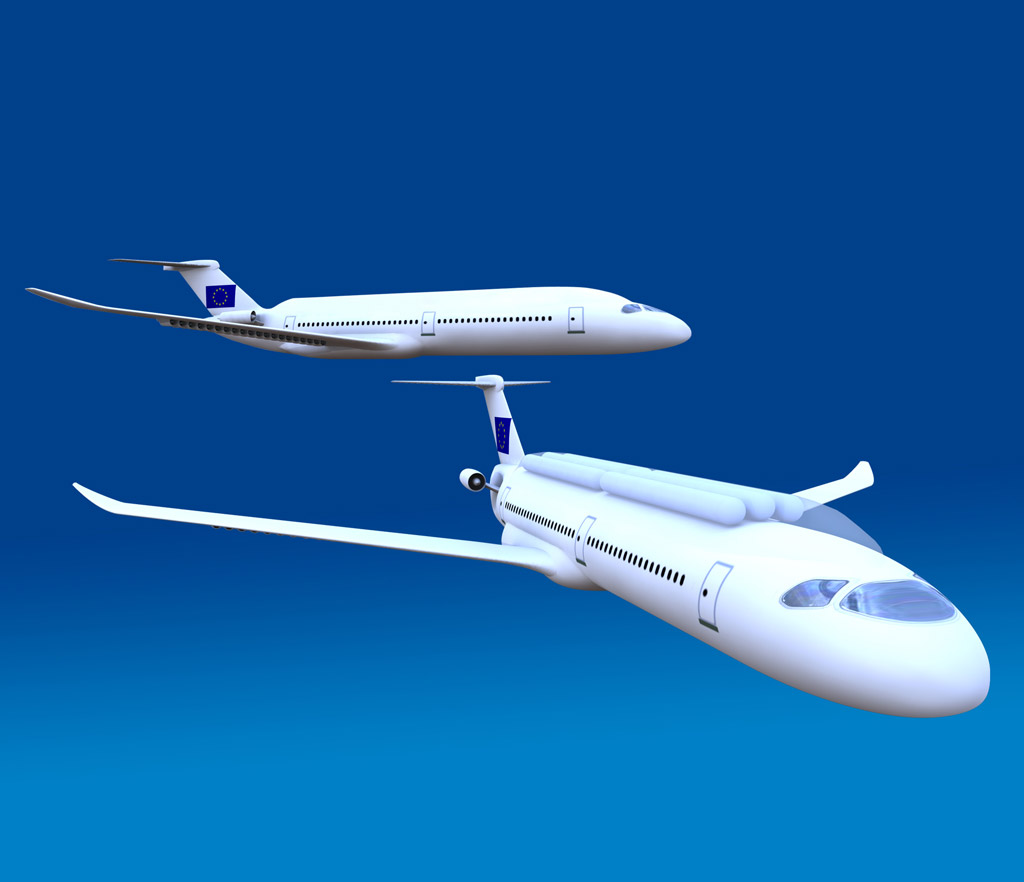Are zero-carbon aircraft for tomorrow?
The COVID crisis has put a strain on stakeholders in the aeronautics sector. To revive the industry, the government announced the 2035 ‘clean sky’ objective. ONERA, which has the mission of preparing the aerospace technologies of tomorrow, had anticipated this by devoting a great deal of research to reducing the environmental impact of aircraft. Focus no. 1 on ONERA's work on new forms of propulsion.
For over a decade, ONERA has been exploring breakthrough concepts to make aircraft less polluting. Overview of some breakthrough technology concepts already developed by ONERA.
Optimising engine integration
In 2008, ONERA analysed innovative engine integration configurations with the NOVA project, the novelty of which was to design the airframe and the engine at the same time. Starting with a medium-haul aircraft, the idea was to position the engines at the rear in a semi-embedded manner: this partial integration makes it possible to ingest the boundary layer of the fuselage thereby reducing the power required and consumption.
Other innovations were considered, such as the shape of the airfoil and downward-directed winglets for reduced drag. On the engine side, NOVA offered engines with a very high dilution rate (Ultra High Bypass Ratio) which reduce noise and fuel consumption.
In the same logic, the E2IM project ‘Study of innovative engine integration concepts’ also imagined a different engine position compared to the rest of the structure; the idea being to better integrate the engine into the wings or the fuselage. What needs to be studied is to what extent the air flow around the aircraft is compatible with sufficient air inlets in the nacelle to correctly supply the engine and what the resulting gain in drag is.
Wind tunnel tests will be carried out in the large wind tunnel at Modane before the end of 2020 to prepare for tests on even more breakthrough formulas in 2022/2023.
Distributed electric propulsion
ONERA is a true maturer of technologies, since, in 2017, it worked on the AMPERE project: a regional aircraft demonstrator with distributed electric propulsion. The project enabled the acquisition of a large experimental database, the analysis of which will make it possible to better prepare the integration of this technology on a future aircraft for entry into service after 2035.
More recently, ONERA presented, at the Paris Air Show 2019, its DRAGON aircraft concept, the aim of which is to assess the advantages and disadvantages of distributed electric propulsion for an airliner.
The concept is to distribute the thrust via a large number of electric ducted fans placed under each wing, which improves propulsion efficiency. These electric motors are powered by the electricity produced by turbines situated at the rear of the aircraft. This is hybrid propulsion technology since the on-board fuel is transformed into electricity.
IMOTHEP: European project
In January 2020, the European Commission selected the IMOTHEP hybrid electric propulsion study project led by ONERA, which acted as a real ‘hub’ for the various stakeholders.
Funded under Horizon 2020, this project is run by a consortium of thirty-three key stakeholders in the aeronautics industry and research. They will carry out an in-depth study of electrical technologies for the hybrid electric propulsion of commercial aircraft in close cooperation with the design of innovative configurations developing new synergies between airframe and propulsion.
Conducting this study at the scale of commercial aircraft, which make up the bulk of current fleets and emissions, is fundamental to reducing aviation emissions.
Hydrogen aircraft
Hydrogen was not necessarily seen as the most promising subject. But ONERA's ability to explore breakthrough concepts (AMPERE, DRAGON, IMOTHEP, projects detailed above) have given it a head start on reflection.
The challenges of hydrogen
While it does not emit CO2, it requires the configuration of aircraft to be modified. As they require the integration of large tanks to store liquid hydrogen at low temperature, which involves redesigning its architecture.
The challenge lies in being able to accommodate a bulky tank, providing thermal insulation (cryogenic liquid of -252.85°C), resulting safety issues, etc.
Two types of use are envisaged: in combustion in turbofans for passenger aircraft or in fuel cells for smaller planes.
While no project has made it possible to recommend a design yet, the NOVA configuration, a concept designed by ONERA a few years ago, appears to be an interesting avenue.
ONERA's assets
Led by ONERA with Airbus, Safran, and Dassault, the project will provide insight into production prospects, sustainability, and financial aspects.
ONERA has, in any case, certain assets to lead the reflection, such as its capacity to work on cross-cutting issues since all the disciplines related to aircraft design will have to be taken into account: aerodynamics, materials, propulsion, etc.
It also has the complementary, experimental, and numerical testing means to test the concepts.
ONERA thus appears to be the benchmark partner for manufacturers.
2035 objective
The government recovery plan’s objective is very ambitious! To achieve it, upstream studies will be required and funds will need to be allocated to fundamental research to allow the development of breakthrough solutions, the only possible way forward. ONERA requires substantial investments in order to be a source of proposals.
State investment is therefore essential and has been confirmed: the aeronautical plan announced by the government will double the French civil aviation authority’s R&D budget in 2020 and will quadruple it in 2021 and 2022.

